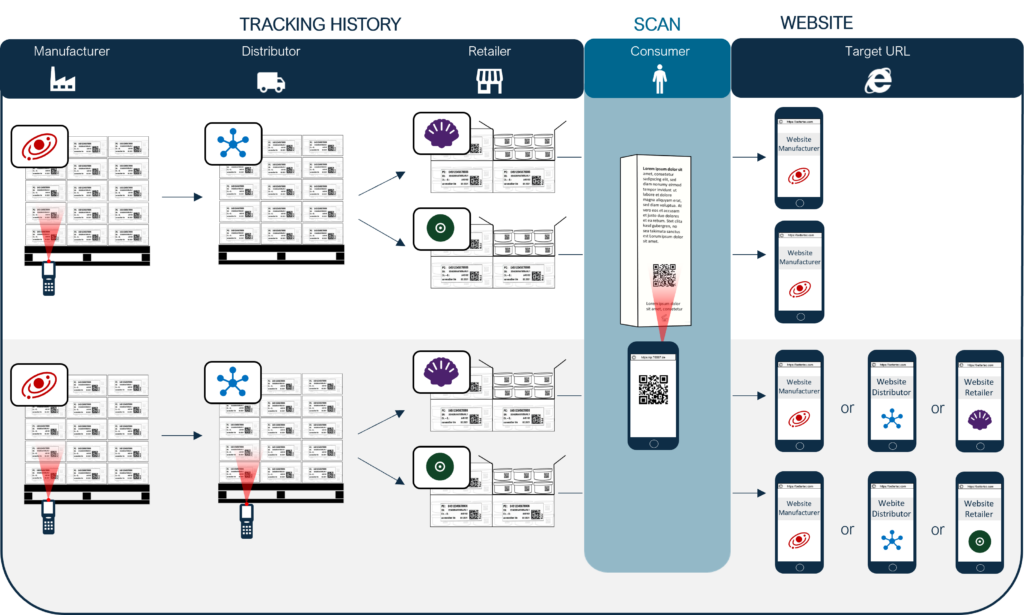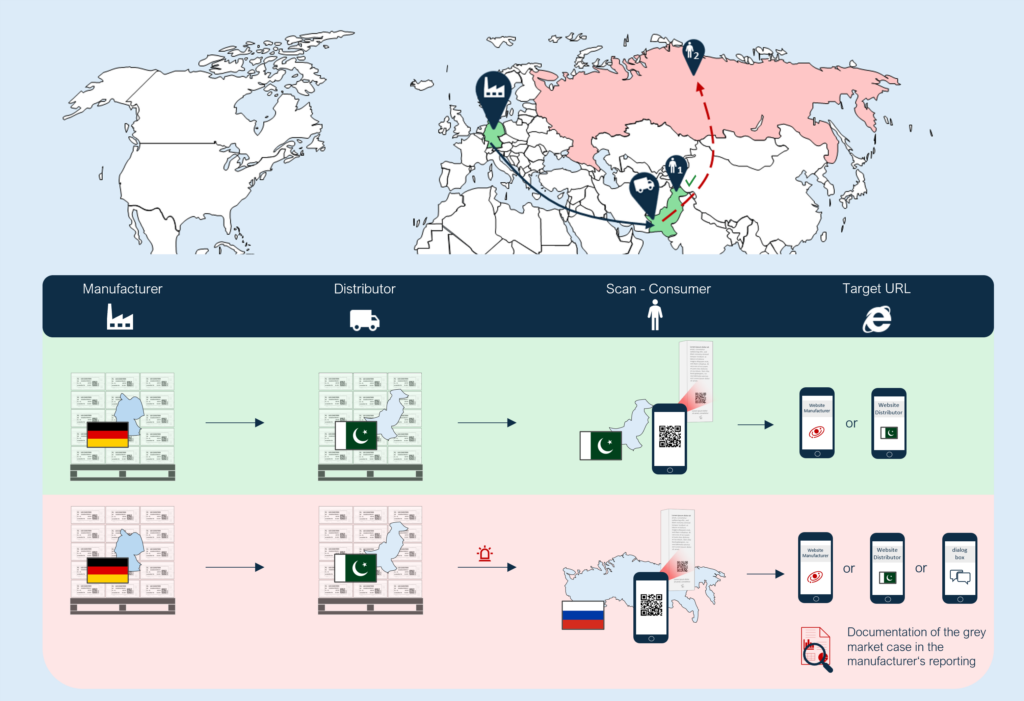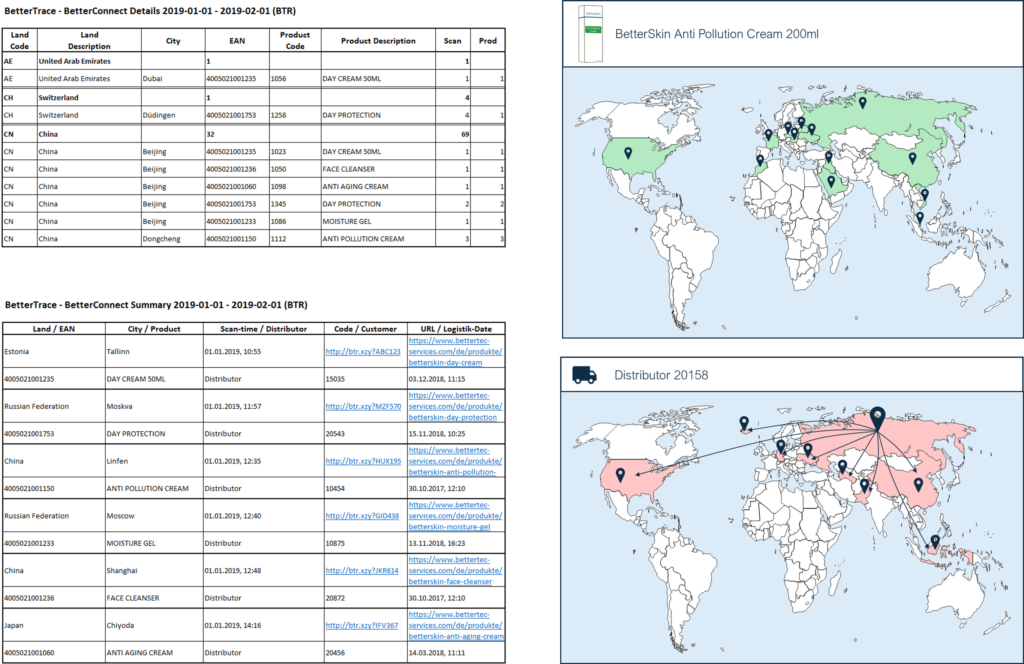long-term customer loyalty
- through the personalized addressing of consumers -
Serial numbers
Platform for forwardings
Analysis
CONSUMER COMMUNICATION VIA DYNAMIC CODES
In the age of digitization, many products are already marked with scannable codes, which are intended to direct the end user to a company website. Static QR codes are often used for this. These have the disadvantage that they always refer to the same target address, which cannot be changed or adjusted. Changing the URL of the QR code always requires printing a new QR code. That’s why our BetterConnect solution enables the use of dynamic QR codes. With a dynamic QR code, it can also be specified later to which target address the user is forwarded and it can also be tracked when and where the QR code was called up. The forwarding rule can also be changed at any time – regardless of the QR code.
The software solution includes the following modules
- BetterID - Generation and administration of secure and unique serial numbers
- BetterConnect - Forwarding of website calls using a dynamic target URL
- BetterBase - Database to aggregate all data
- BetterTrace - Reportings for the internal analysis
A dynamic target
The target URL of the scannable code can be flexibly adjusted at any time with our solution. This enables you to forward your consumers to the ideal website at any time. In addition to forwarding to websites that change over time, the consumer can also be addressed in a personalized way and, for example, be made aware of competitions. There is also the option of having the consumer carry out an authenticity check on the product. The destination URL can be set in the admin interface depending on the following points:
Supply Chain
Geolocation
Item
Time
Supply Chain
The dynamic QR code not only brings advantages for the manufacturer, but also for the distributor and the individual retailers. If the distributor scans, they are recorded as the last actor in the supply chain, and after scanning the QR code, consumers are redirected to the distributor’s or retailer’s website instead of the manufacturer’s. The forwarding rules are defined in a centrally defined set of rules, can be adjusted at any time and take both personalized and localized data into account. The forwarding rules can be set up for all or individual distributors/retailers and can be changed at any time.
Scenario 1: If the distributor does not scan, the consumer is directed to the manufacturer’s website or another previously defined website after scanning the QR code.
Scenario 2: When the distributor scans, the consumer is directed to the website of this distributor/retailer after scanning the QR code. This only works if the distributor is scanning. If he does not scan, the consumer ends up on another website specified in the set of rules.

Geolocation
The application can also be of great help in combating gray market trading, since the last actors in the supply chain can be identified thanks to the track and trace function.
Scenario 1 (green): The manufacturer in Germany sells its products to a distributor based in Pakistan. A consumer in Pakistan scans one of these products. Depending on which rules were previously defined in the set of rules, the consumer is now directed to this previously defined website after scanning the QR code. This can be e.g. the website of the local distributor/retailer or the global website (manufacturer).
Scenario 2 (red): Here, too, the German manufacturer sells its products to the distributor in Pakistan. This, however, sells the products not only in Pakistan, but also in unauthorized countries such as Russia. One of its products is now being scanned by an consumer in Russia. After scanning the QR code, the consumer is also directed to a previously defined website. This can also be the global website (manufacturer) or local website (distributor). Since this could be a gray market case, forwarding to a special website (e.g. dialog window) is also possible. The gray market case is documented in the manufacturer’s reporting.

Item
The forwarding rules are defined in a centrally defined set of rules, can be adjusted at any time and take into account both personalized and localized data. In this way, the consumer is always forwarded to the website that is most relevant to him. This can be the website of the manufacturer or retailer, as well as websites for raffles, promotions or customer service. In addition to collecting market research data, consumers can also be addressed with relevant and localized information and linked to the brand with interactive, innovative product functionalities.
If the expiry date has expired, or in the event of a faulty production, an entire batch or a specific product can be recalled. The consumers will be informed after scanning the QR code.
Time
While static QR codes always refer to the same content, dynamic QR codes can be changed or adjusted at any time.
For each product, the target address to which the user is to be forwarded can be specified in the set of rules and changed again at a later point in time. Furthermore, dynamic QR codes can be used to track when and where the QR code was accessed.
Analysis
All relevant data is recorded in the BetterBase database and is available to you in various evaluations. We are happy to adapt the evaluations to the wishes of our customers. An example of possible evaluations can be found here:

